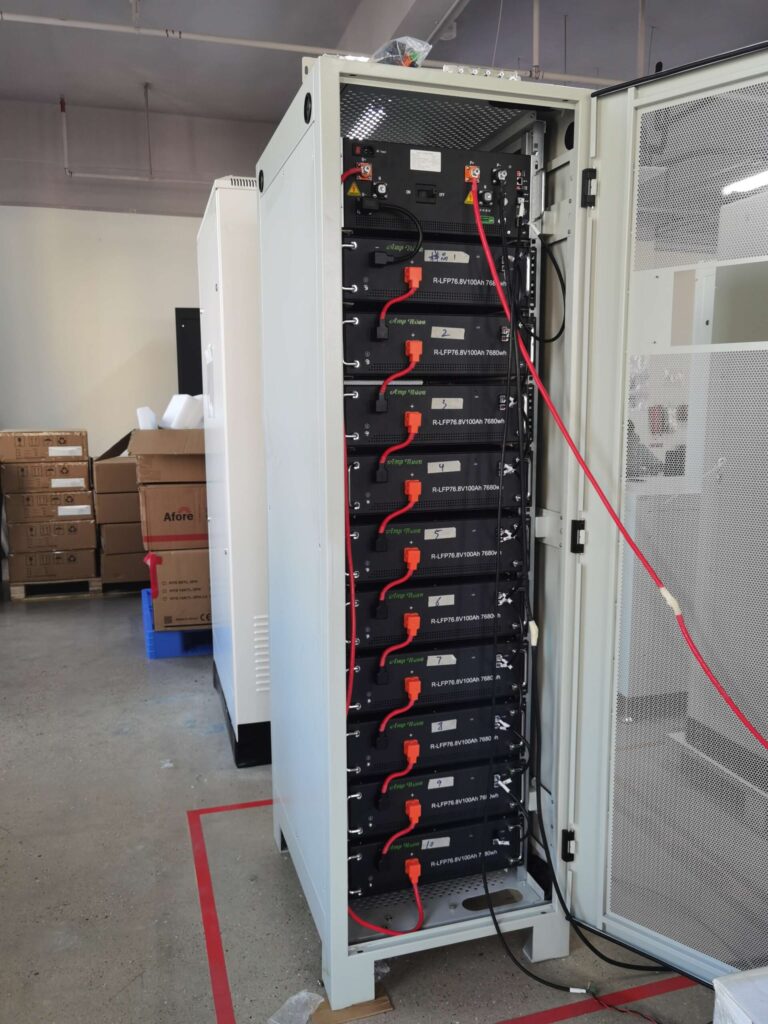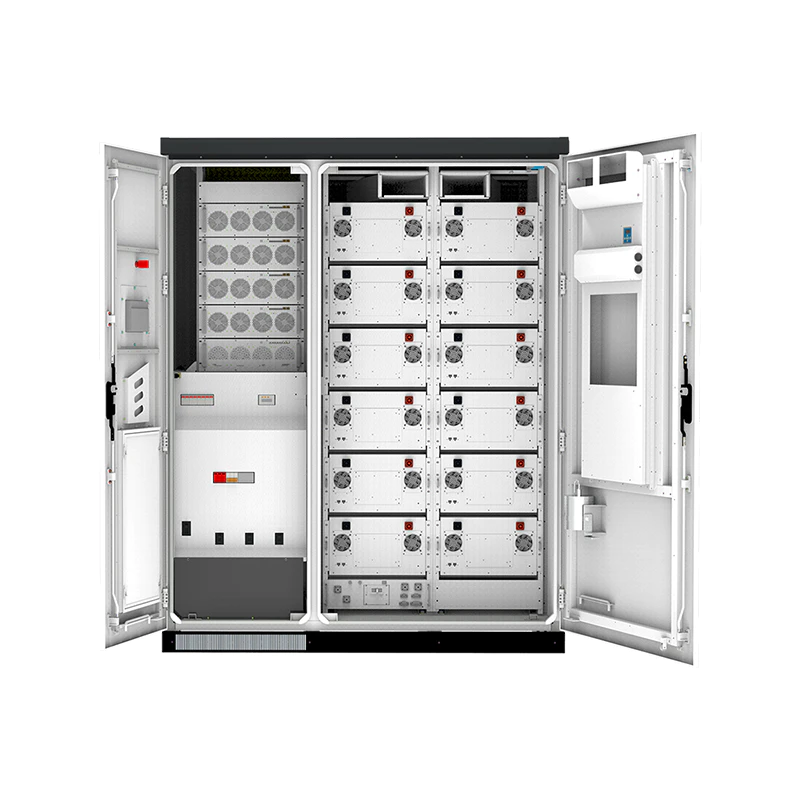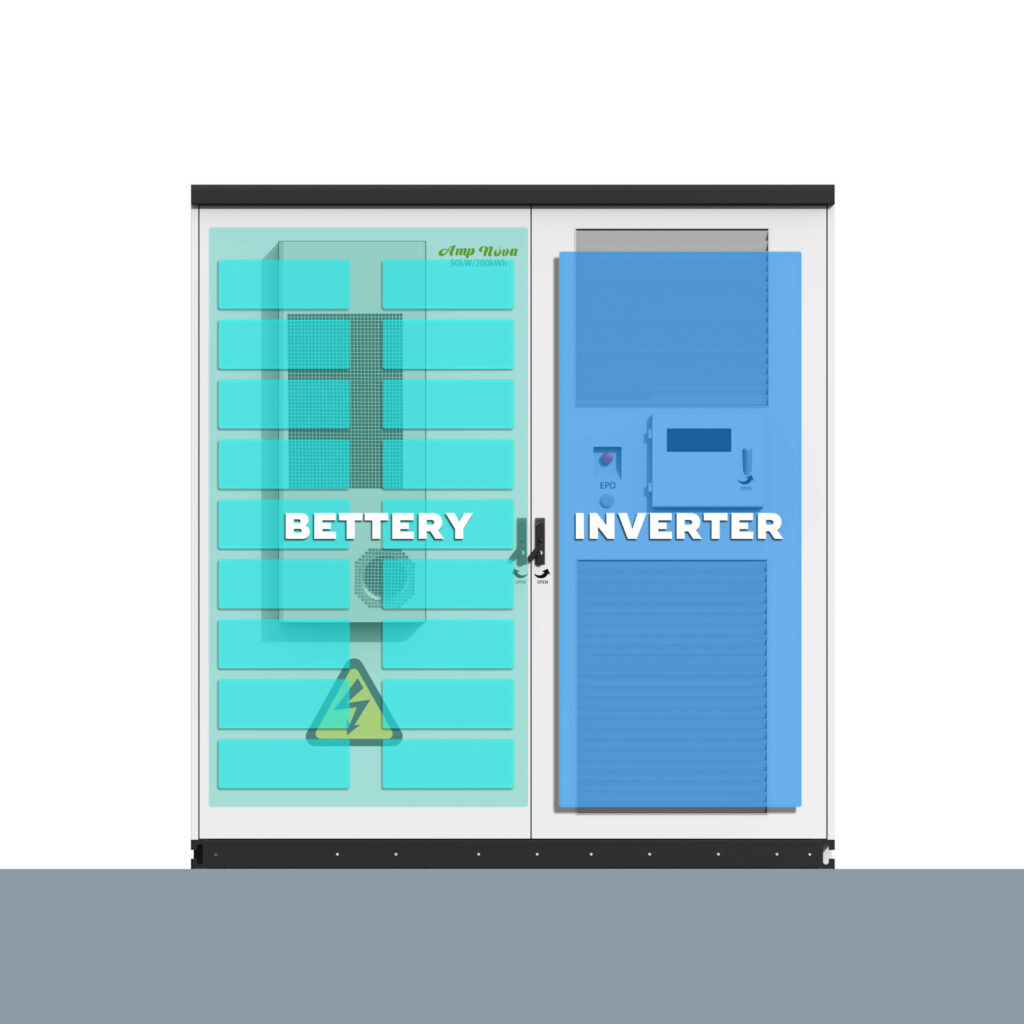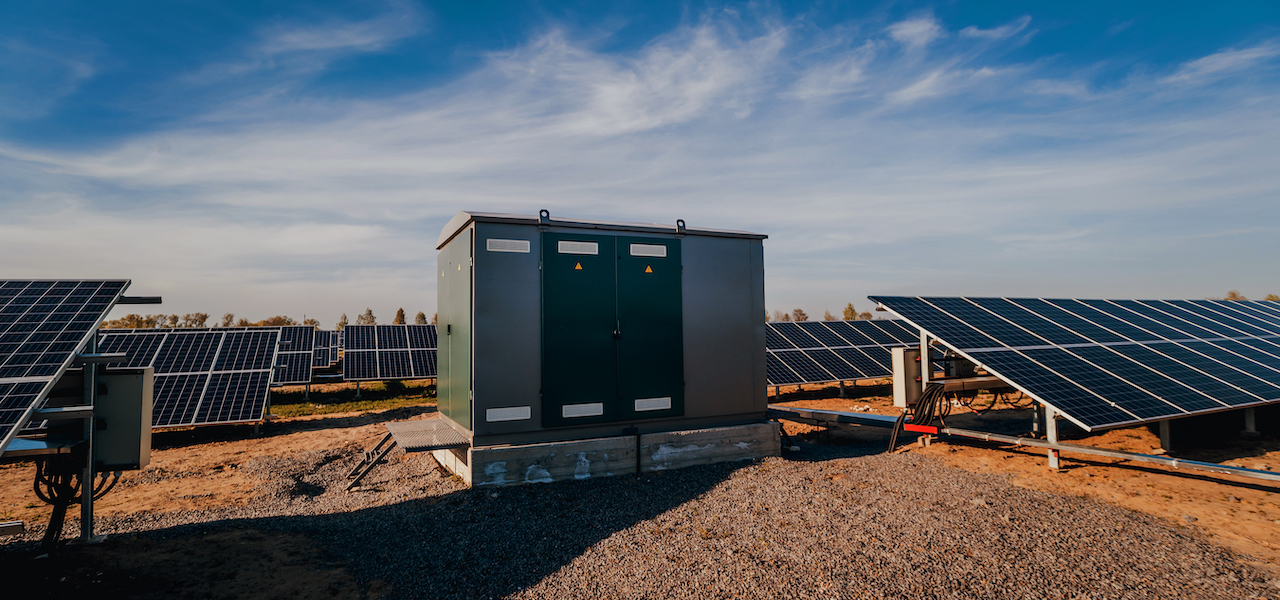- Introduction to Industrial Energy Storage Systems
- Key Points to Consider:
- Benefits of Implementing Industrial Energy Storage Systems
- Types of Industrial Energy Storage Systems
- Key Components of Industrial Energy Storage Systems
- Factors to Consider When Choosing an Industrial Energy Storage System
- Installation and Maintenance of Industrial Energy Storage Systems
- Challenges and Limitations of Industrial Energy Storage Systems
- Future Trends in Industrial Energy Storage Systems
- Conclusion
Contents
- 1 Introduction to Industrial Energy Storage Systems
- 2 Benefits of Implementing Industrial Energy Storage Systems
- 3 Types of Industrial Energy Storage Systems
- 4 Key Components of Industrial Energy Storage Systems
- 5 Factors to Consider When Choosing an Industrial Energy Storage System
- 6 Installation and Maintenance of Industrial Energy Storage Systems
- 7 Challenges and Limitations of Industrial Energy Storage Systems
- 8 Future Trends in Industrial Energy Storage Systems
- 9 Conclusion
Introduction to Industrial Energy Storage Systems
Industrial energy storage systems play a vital role in managing energy consumption and optimizing efficiency in various industries. These systems are designed to store excess energy during low-demand periods and release it during peak hours, helping to balance the grid and reduce energy costs. The integration of energy storage solutions in industrial settings is becoming increasingly popular due to their ability to enhance energy resilience, lower electricity bills, and support sustainability goals.
Key Points to Consider:
- Types of Industrial Energy Storage Systems: Industrial energy storage systems come in various forms, including lithium-ion batteries, flow batteries, compressed air energy storage, and thermal energy storage systems.
- Benefits of Energy Storage Systems: These systems offer benefits such as peak shaving, load shifting, backup power supply, frequency regulation, and increased renewable energy integration.
- Integration Challenges: Despite their advantages, industrial energy storage systems face challenges related to high initial costs, limited scalability, regulatory hurdles, and technological compatibility with existing infrastructure.
- Future Outlook: The industrial energy storage market is expected to witness significant growth in the coming years, driven by advancements in energy storage technologies, increasing renewable energy penetration, and regulatory support for grid modernization.

Overall, industrial energy storage systems represent a critical component of the evolving energy landscape, offering a sustainable solution for industries to manage their energy needs efficiently while contributing to a more reliable and resilient power grid.
Benefits of Implementing Industrial Energy Storage Systems
- Industrial energy storage systems help in reducing energy costs by storing excess energy during off-peak hours when electricity prices are lower and then utilizing it during peak hours when prices are higher.
- Implementing energy storage systems can enhance grid stability and reliability by providing backup power during outages or emergencies.
- Energy storage systems can also help in integrating renewable energy sources like solar and wind power into the industrial grid by storing excess energy generated during peak production times for use when production is lower.
- By reducing peak demand from the grid, industrial energy storage systems can help alleviate strain on the overall electricity grid and potentially avoid the need for costly infrastructure upgrades.
- Industrial energy storage systems enable businesses to participate in demand response programs, where they can adjust their energy consumption patterns based on grid conditions, earning incentives for reducing peak demand.
- Energy storage systems can also provide power quality and voltage support, ensuring a stable and consistent power supply for industrial operations.
- Implementing industrial energy storage systems can contribute to environmental sustainability by reducing reliance on fossil fuels and lowering greenhouse gas emissions associated with traditional energy production methods.
- Additionally, energy storage systems offer businesses opportunities to monetize their stored energy capacity through various energy market mechanisms, creating additional revenue streams for industrial operations.
Types of Industrial Energy Storage Systems
- Battery Energy Storage Systems (BESS):
- BESS is one of the most common types of energy storage systems used in industrial settings.
- They store energy in rechargeable batteries that can be charged during off-peak hours and discharged when energy demand is high.
- BESS is versatile and can be used for various applications, including peak shaving, load shifting, and grid stabilization.
- Flywheel Energy Storage Systems:
- Flywheel systems store energy in the form of rotational kinetic energy.
- They are known for their high power and fast response times, making them ideal for applications requiring quick bursts of energy.
- Flywheels are often used in industries where short-duration energy storage and quick power delivery are crucial.
- Compressed Air Energy Storage (CAES):
- CAES systems store energy by compressing air into underground reservoirs.
- When energy is needed, the compressed air is released and used to drive turbines to generate electricity.
- CAES is suitable for industrial applications that require large-scale energy storage and can be utilized by utilizing existing underground caverns or salt domes.
- Pumped Hydro Storage:
- Pumped hydro storage systems use surplus energy to pump water to a higher reservoir during low-demand periods.
- When energy is required, the water is released downhill to generate electricity.
- These systems are well-established and widely used for large-scale energy storage in industrial operations with access to suitable topography.
- Thermal Energy Storage (TES):
- TES systems store energy in the form of heat or cold for later use.
- They are commonly used in industrial processes that require heating or cooling at specific times.
- TES systems can help industries reduce energy costs and improve efficiency by storing energy when electricity rates are low.
Each type of industrial energy storage system offers unique benefits and applications, allowing industries to optimize energy usage, reduce costs, and enhance overall operational efficiency.
Key Components of Industrial Energy Storage Systems
- Industrial Battery Storage:
- Lithium-ion batteries are commonly used in industrial energy storage systems due to their high energy density, long lifespan, and fast response times.
- Flow batteries are another option for large-scale industrial storage, offering scalability and flexibility.
- Power Conversion System:
- Inverters are vital components that convert the DC power stored in batteries into AC power for use by industrial equipment.
- Other power conversion components like transformers and converters help regulate the voltage and current flow within the system.
- Energy Management System:
- This system controls and optimizes the charging and discharging of the storage system based on energy demand, cost of electricity, and grid conditions.
- Advanced algorithms and software enable real-time monitoring and intelligent decision-making for efficient energy storage.
- Thermal Management System:
- To maintain optimal operating temperatures, industrial energy storage systems require cooling systems to prevent overheating and ensure battery longevity.
- Heat exchangers, cooling fluids, and temperature sensors help manage and dissipate heat generated during charging and discharging cycles.
- Safety and Monitoring Systems:
- Fire suppression systems, smoke detection, and other safety measures are crucial to mitigate risks associated with industrial energy storage.
- Continuous monitoring of system performance, battery health, and environmental conditions is essential for early detection of potential issues.
- Grid Connection Infrastructure:
- Interconnection equipment like switchgear, breakers, and meters facilitate the connection of energy storage systems to the grid.
- Smart grid technologies enable bidirectional power flow, grid stabilization, and integration of renewable energy sources for enhanced system efficiency.

Factors to Consider When Choosing an Industrial Energy Storage System
- Capacity: Evaluate your energy storage needs in terms of kilowatt-hours (kWh) or megawatt-hours (MWh) to ensure the system can efficiently meet your requirements.
- Power Rating: Consider the power rating of the system in kilowatts (kW) or megawatts (MW) to ensure it can handle the peak power demands of your industrial operations.
- Technology: Research different energy storage technologies such as lithium-ion batteries, flow batteries, or flywheel systems to choose the one that best suits your requirements for efficiency, lifespan, and environmental impact.
- Scalability: Opt for a system that can be easily expanded or scaled down based on your future energy storage needs, allowing for flexibility as your industrial operations grow.
- Integration: Ensure that the energy storage system can seamlessly integrate with your existing infrastructure, including renewable energy sources or grid connections, to maximize efficiency and cost-effectiveness.
- Safety and Reliability: Prioritize systems with robust safety features and a proven track record of reliability to minimize the risk of downtime or safety issues in your industrial facility.
- Cost: Evaluate the upfront costs, operational expenses, and potential savings or revenue generation opportunities to determine the overall cost-effectiveness of the energy storage system.
- Regulatory Compliance: Consider regulatory requirements and incentives related to energy storage in your region to ensure compliance and take advantage of relevant financial benefits.
By carefully considering these factors, industrial facilities can choose the most suitable energy storage system to optimize their energy efficiency, reduce costs, and enhance overall operational performance.
Installation and Maintenance of Industrial Energy Storage Systems
- Industrial energy storage systems are complex and require expert installation procedures to ensure optimal performance and safety.
- Proper installation involves a detailed assessment of the site, including load requirements, available space, and integration with existing infrastructure.
- Qualified technicians should handle the installation to adhere to industry standards and manufacturer guidelines.
- Regular maintenance is crucial for the efficient operation of industrial energy storage systems.
- Maintenance tasks may include monitoring system performance, conducting routine inspections, and replacing components as needed.
- Scheduled maintenance can prevent costly breakdowns and prolong the lifespan of the energy storage system.
- To ensure the system functions at its best, it is essential to follow a maintenance schedule provided by the manufacturer.
- Any repairs or upgrades should be carried out by trained professionals to avoid accidents or damage to the system.
- Implementing a proactive maintenance plan can help address issues before they escalate, ensuring uninterrupted energy supply for industrial operations.
- Proper installation and maintenance are key factors in maximizing the benefits of industrial energy storage systems.
Challenges and Limitations of Industrial Energy Storage Systems
- Industrial energy storage systems face several challenges and limitations that need to be addressed for optimal performance and efficiency.
- One key challenge is the high initial cost of implementing energy storage systems in industrial settings. This cost includes not only the purchase of the storage units but also installation and maintenance expenses.
- Another significant concern is the efficiency of energy storage systems. While these systems are designed to store excess energy for later use, energy losses can occur during the charging and discharging processes.
- The limited lifespan of energy storage systems is also a challenge that industrial users need to consider. Over time, the storage capacity of these systems may decrease, requiring replacement or expensive maintenance.
- Another limitation is the size and scalability of industrial energy storage systems. In some cases, the physical size of the storage units may restrict their installation in certain industrial environments.
- Integration with existing energy systems and grid infrastructure can present compatibility issues and require additional investments in upgrading or modifying the current systems.
- Variability in energy storage technologies and performance can also pose challenges for industrial users looking for the most suitable option to meet their specific energy storage needs.
- Environmental concerns, such as the use of certain materials in energy storage systems or the impact of disposal at the end of the system’s life cycle, are also important considerations for industry stakeholders.
These challenges and limitations highlight the importance of comprehensive planning, evaluation of available technologies, and ongoing research and development efforts to enhance the efficiency and effectiveness of industrial energy storage systems.

Future Trends in Industrial Energy Storage Systems
- Increased Use of Lithium-Ion Batteries: The future of industrial energy storage systems is heavily reliant on the continued development and adoption of lithium-ion batteries. These batteries offer high energy density, long cycle life, and fast charging capabilities, making them ideal for large-scale industrial applications.
- Integration of Renewable Energy Sources: With the rise of renewable energy sources such as solar and wind power, industrial energy storage systems will play a crucial role in balancing supply and demand. This integration will require advanced energy storage technologies to ensure reliable and efficient energy distribution.
- Focus on Energy Management Software: As industrial operations become more complex and energy-intensive, there is a growing emphasis on the development of sophisticated energy management software. These tools enable real-time monitoring, control, and optimization of energy storage systems, resulting in cost savings and improved efficiency.
- Emergence of Solid-State Batteries: Solid-state batteries are gaining traction in the industrial energy storage sector due to their enhanced safety, higher energy density, and longer lifespan compared to traditional batteries. Their future adoption could revolutionize the way industrial facilities store and utilize energy.
- Expansion of Grid-Scale Energy Storage: The deployment of grid-scale energy storage solutions is expected to increase in the coming years to support the stability and reliability of power grids. Industrial energy storage systems will need to evolve to meet the demands of grid-scale applications, driving innovation and technological advancements in the industry.
- Implementation of Artificial Intelligence (AI) and Machine Learning: AI and machine learning algorithms are being incorporated into industrial energy storage systems to optimize performance, predict maintenance requirements, and enhance overall efficiency. Future trends will see greater integration of AI technologies to enable autonomous operation and intelligent decision-making within energy storage systems.
Conclusion
Industrial energy storage systems play a critical role in enhancing grid stability and efficiency. Deploying energy storage solutions can help reduce peak demand charges and improve overall energy management. Thanks to their high energy density and efficiency, lithium-ion batteries continue to dominate the industry.
Innovative technologies like flow batteries and thermal energy storage are emerging as promising alternatives for industrial applications. Integration of renewable energy sources with energy storage systems is vital for achieving a sustainable and reliable energy future. Ongoing research and development efforts focus on improving the performance and cost-effectiveness of industrial energy storage solutions.
Regulatory support and incentives play a crucial role in driving the adoption of energy storage technologies in the industrial sector. Collaboration between stakeholders, including utilities, manufacturers, and policymakers, is essential for the successful implementation of energy storage projects. As the demand for reliable and flexible energy solutions continues to grow, industrial energy storage systems from Solar Battery Manufacturer will play a key role in shaping the future of the energy industry.
